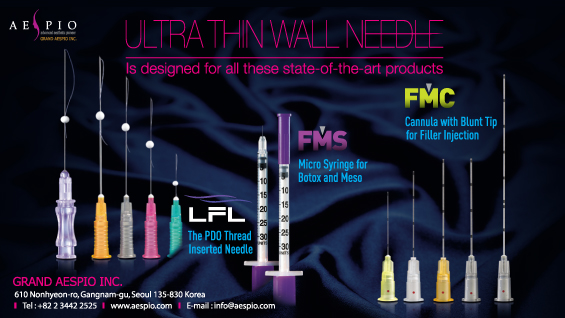Introduction

The introduction of a cannula led to innovative injection techniques in the field of aesthetic medicine. A cannula is a blunt-tip needle with a small hole on the cannula shaft called ‘side port’.
The popularity of cannulas as a supplemental tool to traditional needles has continuously grown. Using a cannula increases the treatment efficiency and the patients are highly satisfied with a more comfortable procedure with drastically fewer side effects (i.e. pain, edema, and hematoma, etc.) and shorter downtime. In the early days, the cannula was used for injecting cross-linked hyaluronic acid (HA) dermal fillers. Its use has now expanded to include non-cross-linked HA and PRP injections.




Cannula of a different manufacturer (x230).


FMC (x230).
A cannula bends around tissue structures to avoid blood vessels and nerves, whereas a needle punctures through them.
A cannula reduces pain during injection and shortens the recovery time, making the procedure more convenient and comfortable for patients. A cannula is also safer with a low risk of venous infiltration and arterial embolism. Injection using a cannula requires mild pressure, which reduces pain during treatment.
I often perform rejuvenation procedures using HA and PRP. I have used cannulas of different major manufacturers to find the safest and the most reliable product. Each product has different advantages and disadvantages. I would like to introduce FMC, a cannula that I have found to be highly reliable and effective.
[Advertisement] ULTRA THIN WALL NEEDLE – Manufacturer: AESPIO(www.aespio.com)
Electrolytic grinded ultra-thin wall cannula
FMC with the UTW (Ultra Thin Wall) diameter, has thinner walls than other products. This allows a larger hollow area inside the tube than the international standard and injection of larger amounts of filler.
The UTW Cannula has a wider inner diameter compared to cannulas of the same size. This reduces the discharge pressure by 35%, making the injection smoother. While increasing the injectability, the UTW Cannula also causes lower friction due to electrolytic grinding, reducing pain during injection.
-To be continued-




















